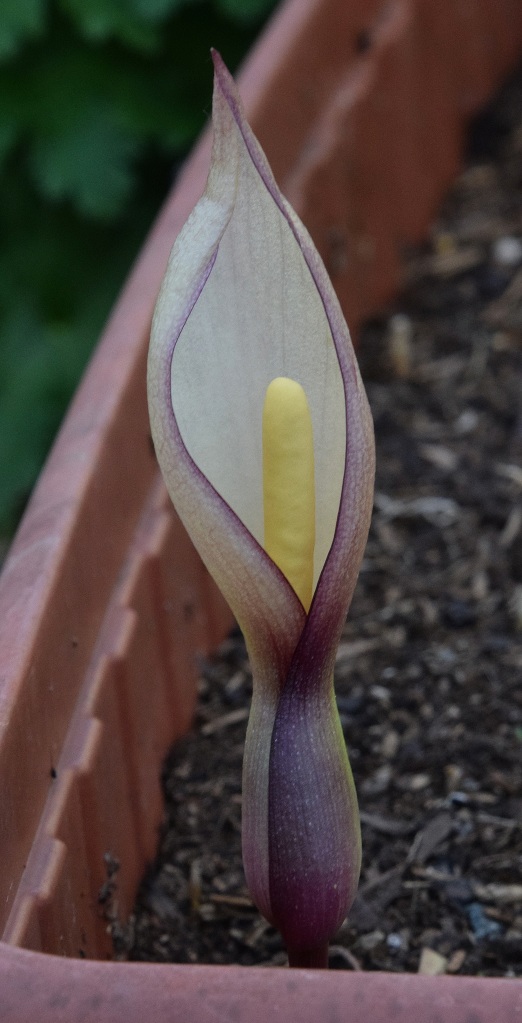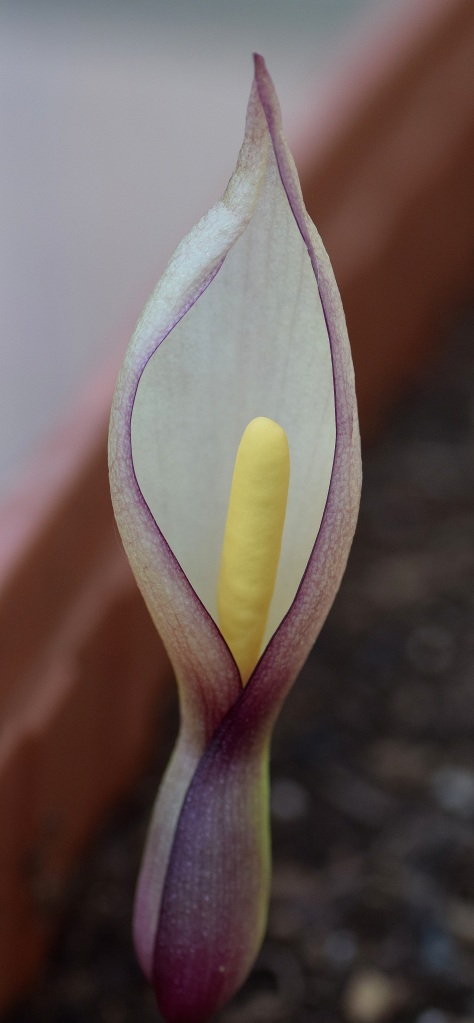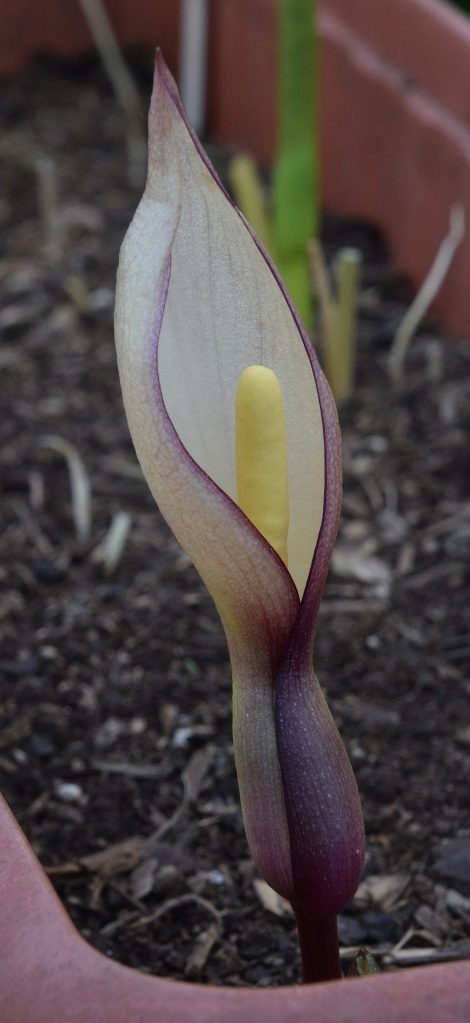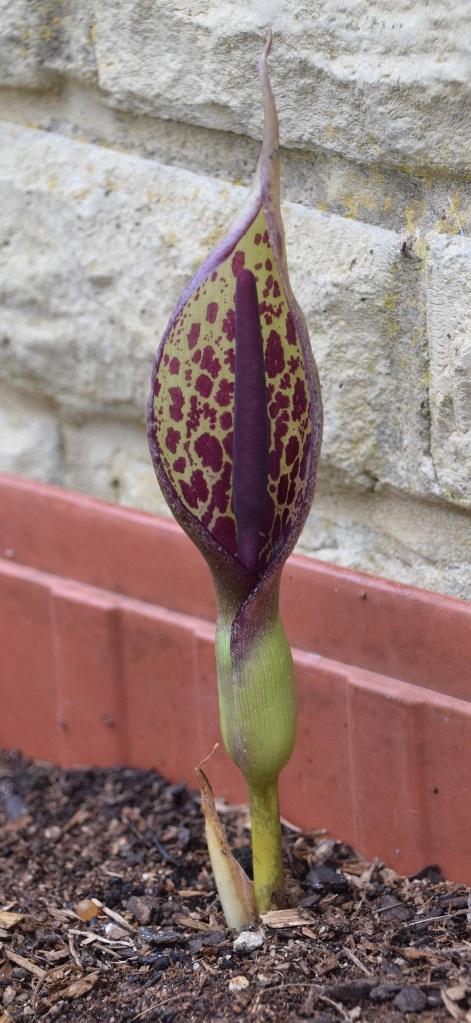I do not do so much with Aroids these days, various of the difficult subjects I formerly attempted doggedly to bring to bloom year upon year having at length exhausted my reserves of the proverbial “Just a Little”. Neither the exceptional, prolonged frosts of winter 2022/23, nor the as notable wet one just gone have been kind to others. Of those featured herein in the past, our locally infamous Dragon Arum patch (see here) was put paid to by the first of those climactic events; while the FS2 Helicodiceros muscivorus tuber acquired with great expectation in 2020 (see here) shrunk season upon season instead before also expiring, whilst persisting as one of this journal’s top 20 most referred to subjects.
Amongst the survivors, Arisaema ringens, Arisarum proboscideum and Pinellia tripartitum (see Aroids tab) continue to thrive. Somewhere in the middle ground of all this lie two Mediterranean Arums acquired in the autumn of 2019, A concinnatum and A discoridis var syriacum. Since then their tuber stocks have multiplied greatly, producing ample foliage through each winter, but actual blooms in late spring have been a rare event. So the tantalising possibility of being thus rewarded still reminds me of my original fascination for the genus.



The first of those had performed just once before, in 2021. Now, on the evening of 8th I went outside to check, and what by the hitherto deep red, unopened toning I had expected to be a discoridis had announced itself as the other option. Moments like this cannot be missed since they occur so rarely and are then short-lived, so my camera was at once retrieved to capture the occasion (pictured above).
Through eight days that ensued, a second developing spathe gradually deepened in tone, to once more in the evening on 16th reveal itself as a discoridis (pictured below). Not only that but it was a stinker, the first of just three specimens to have bloomed here so far that has lived up to that reputation. Though quite diminutive by comparison with the now vanquished Dragons which once flourished before it, this dark beauty packed quite a punch for its size, as I had initially understood upon acquiring the so infrequently rewarding stock. Such odours are very short lived and so need to be appreciated upon these plants’ first announcement



In the morning the bloom had fully opened (centre and right, above) and the smell was barely noticeable, as is normal with day two aroids. This Arum is an absolute stunner, and the latest specimen was the most strikingly marked so far. A second, developing A concinnatum spathe had yet to unfurl and that happened a day later, but it was rather under-developed and not worth recording. This episode was a reminder of both my past predilection for these weird plants and how they can still inspire.


The aforementioned Pinellia tripartitum has bloomed early this year (pictured above). The alluring woodland Aroid from east Asia has flourished since its arrival here in 2018. Whilst the wet late winter and spring wiped out the top growth of the other two items and all the Arum italicum in our dedicated Aroid bed, the conditions seem to have suited this third. I will not be discarding my remaining Aroid stocks any time soon. For more information on these plants go to this journal’s Aroid tab then scroll down.
